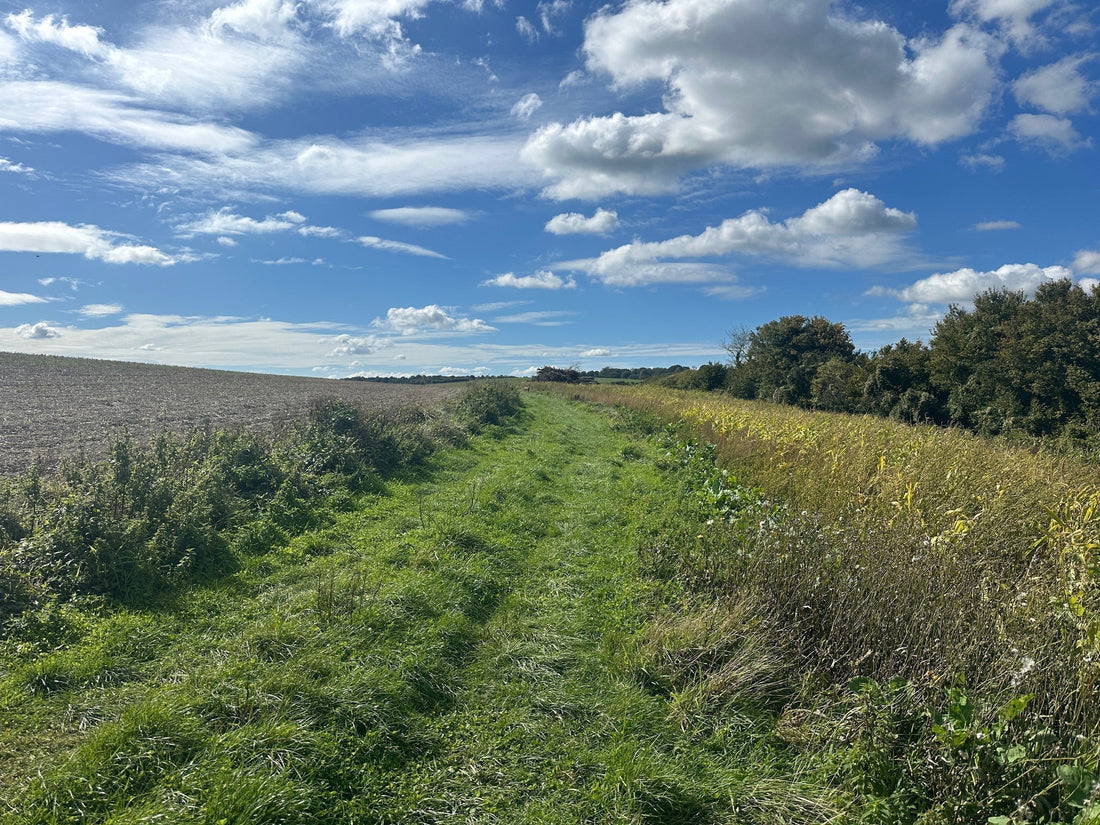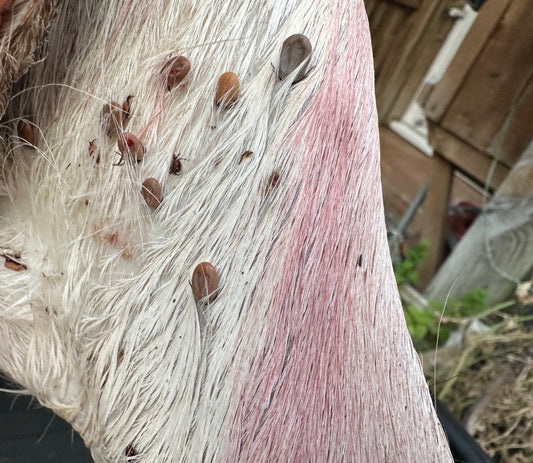Why the Countryside Stewardship CWS1 Grant Has Never Been More Crucial. When discussing deer management with landowners, agents, or estate managers, conversations often begin with population impact, damage to crops, browsing pressure on regeneration, or overgrazing within conservation woodlands. Rarely, however, do those discussions extend to the financial reality of the people doing the work on the ground.
Effective deer management is expensive not because of inefficiency, but because of the nature of the task. It’s a slow, deliberate, highly skilled process requiring time, specialist equipment, and consistency across seasons. On a large mixed hypothetical estate of 10,000 hectares with approximately 500 hectares of woodland, the actual annual running cost of maintaining a professional standard of deer management is often underestimated by a wide margin.
Here we take a closer look at those costs: what it really takes to manage deer humanely, safely, and responsibly on an estate of this size.
Setting the Scene
Let’s start with a realistic hypothetical picture. A 10,000 ha mixed estate in Sussex contains:
- 500 ha of woodland, made up of mixed broadleaf, conifer, and regeneration areas.
- 9,500 ha of farmland, a mixture of arable and pasture, some of it bordering public access land.
- A resident deer population of at least three species; in the South East, fallow dominate, roe are common, and muntjac are increasing.
Without intervention, this landscape quickly becomes imbalanced. Fallow herds in particular can cause extensive damage to crops, regenerate within woodlands at unsustainable densities, and limit the recovery of ground flora.
To maintain ecological stability and to meet the UK Forestry Standard and Countryside Stewardship requirements, deer management must be continuous, methodical, and data-driven. That takes both time and resources, and those resources come at a cost.
The Hidden Cost of Time
Most people outside the sector see deer management as a few early mornings or late evenings during the season. The reality is far more complex.
A professional deer manager working a 10,000 ha estate spends, on average, to comply with working time regulations, a maximum of 48 hours per week for 49 weeks (three weeks off is unlikely but accepted here for calculation). That equals 2,352 hours per year on the ground.
That includes:
- Culling operations: morning and evening outings, often three or four times a week.
- Population monitoring: using trail cameras, faecal transects, and thermal surveys.
- Data reporting: for both internal records and external grant compliance.
- Butchery, larder work, and carcass handling: including inspection, tagging, and storage.
- Travel and coordination: meeting with landowners, agents, and Forestry Commission officers.
- Maintenance and safety checks: high seats, vehicles, cold rooms, and firearms.
Even before adding fuel, ammunition, insurance, or maintenance, this level of commitment represents a major time investment.
That equates to £32,000 per year in labour alone (2,352 hrs × £13.61/hr - hr rate taken from the averaged skilled worker within the sector). And that’s before a single mile is driven or round fired.

The Running Costs: A Breakdown
To understand the true cost of deer management, it’s important to separate capital investment (rifle, optics, and equipment) from running costs, which represent the ongoing financial reality of maintaining an operational standard year after year.
The following breakdown represents an approximate annual cost for a professional deer manager covering a 10,000 ha estate.
1) Fuel and Vehicle Use
Most managers will drive a 4×4, covering roughly 8,000–10,000 miles per year across multiple estates. Factoring in current diesel prices and wear-and-tear, that alone equates to £4,000–£5,000 annually.
If leasing, an example HP agreement currently advertised (based on an on-the-road price of £45,826, 60 monthly payments of £699 at 8.9% APR) equates to £8,388 per year. (I've not included tax)
Adding fuel, insurance, servicing, tyres, and maintenance, total vehicle-related expenses approach £12,000–£13,000 annually.
For some estates, additional vehicles such as quads add another £500–£1,000 annually in maintenance and fuel.
2) Ammunition and Range Practice
A competent deer manager practises regularly. Zeroing, range maintenance, targets, and rounds quickly accumulate.
- Ammunition: £2–£3 per round
- Average use: 400–600 rounds per year
- Annual ammo cost: £800–£1,800
- Ground maintenance: £300–£600 annually
Together, ammunition and practice easily exceed £2,000 per year.
3) Insurance and Certification
Professional indemnity and public liability insurance (often up to £10 million) are non-negotiable. NGO (National Gamekeepers’ Organisation) Gamekeeper membership: £55/year. Add Deer Stalking Certificates (DSC1 & DSC2), first aid training, and CPD, and the figure sits around £500–£1,000 per year.
4) Equipment Maintenance and Consumables
This includes knives, batteries, gloves, disinfectant, cleaning materials, PPE, and all consumables necessary for hygiene and safety. Even with careful management, consumables average £600–£800 annually, with equipment replacement adding a further £500–£1,500.
5) Cold Storage and Butchery Equipment
Running a compliant larder involves refrigeration, inspection, and electricity costs. Even excluding installation, energy alone costs £600–£900 per year, depending on throughput and local tariffs.
(I’ve not included waste disposal here as this varies by estate and contractor.)
6) Administrative Overheads
Reporting, compliance documentation, and grant management all require time. Factor in software, mapping tools, accountancy and office costs, and you can easily allocate £1,000–£1,500 per annum. ( Tax not inlcuded)
Total Annual Running Cost
| Category | Approximate Annual Cost |
|---|---|
| Vehicle lease, fuel, and upkeep | £12,000–£13,000 |
| Ammunition and practice | £2,000 |
| Insurance and training | £1,000 |
| Equipment and consumables | £1,500 |
| Cold storage and energy | £800 |
| Administration and software | £1,200 |
| Labour (2,352 hrs @ £13.61/hr) | £32,000 |
| Estimated Annual Total | £50,000–£51,500 |
This estimate reflects the reality for a professional deer manager operating alone. Larger estates employing multiple managers, or contracting external teams, will often see figures well above this.
The Capital Investment: Setting Up Professionally
While the running costs capture annual expenditure, it’s important to acknowledge the capital investment that underpins professional deer management.
A credible setup, compliant with best practice and health and safety expectations, typically includes:
- Rifle and moderator: £2,000–£10,000
- Optics (scope): £1,500–£5,000
- Thermal or night vision unit: £2,500–£5,000
- Binoculars: £500–£5,000
- High seats (×5–10): £3,000–£5,000
- Cold storage (chiller, second-hand): £2,000–£10,000
- Protective and field clothing: £500–£2,000
That’s a total capital outlay of approximately £12,000–£35,000 before a single outing takes place.
This equipment is not optional. It’s the foundation of safe, humane, and effective deer management, and must be maintained, insured, and periodically replaced.

Why Grants Like CWS1 Matter
The Countryside Stewardship CWS1 Deer Control and Management grant provides £105 per hectare per year (as of 2025) for land where deer control has been identified as necessary within a woodland management plan.
On a 500 ha woodland, this equates to £52,500 annually, a figure that can offset the real-world cost of management when applied correctly.
Crucially, this isn’t free money for stalking, it’s a contribution toward the genuine cost of habitat protection. Deer management isn’t simply about reducing numbers; it’s about balancing ecology, supporting woodland regeneration, and enabling the establishment of appropriate ground flora and understory.
In many cases, this grant is the difference between consistent, structured management and periodic, reactive control. It enables estates to employ qualified managers rather than relying solely on recreational stalkers, whose sporadic activity often fails to achieve the level of consistency required to meet environmental objectives.
Measuring Cost Against Value
YOU CAN USE OUR CROP LOSS CALCULATOR HERE
When landowners question the cost of professional deer management, it’s worth reframing the discussion. What is the cost of not managing deer?
- Lost timber regeneration across 500 ha in future yield.
- Crop losses from fallow browsing: £10,000–£20,000 annually.
- Road traffic accidents involving deer: costly and reputationally damaging.
- Loss of biodiversity and habitat condition, risking Countryside Stewardship compliance.
In that context, a management cost of £50,000 per year is not an expense but an investment in the estate’s ecological and financial future.
Professional deer management is one of the most misunderstood yet essential aspects of land stewardship in the modern countryside.
For a 10,000 ha estate with 500 ha of woodland, annual running costs of £50,000–£51,500 is a realistic reflection of what it takes to manage deer responsibly.
The CWS1 grant, at £105 per hectare, provides a financial mechanism to ensure that this work continues, allowing landowners to employ or retain professional managers, meet their ecological obligations, and contribute to regional herd reduction.
For land agents, estate owners, and managers alike, understanding these numbers is crucial. It’s not about the cost of pulling the trigger, it’s about the infrastructure, expertise, and consistency that make every action safe, ethical, and effective.
As the South East continues to face unprecedented deer pressures, now is the time to recognise and support the people quietly working behind the scenes, the professionals on the ground, balancing ecology, safety, and long-term sustainability.






